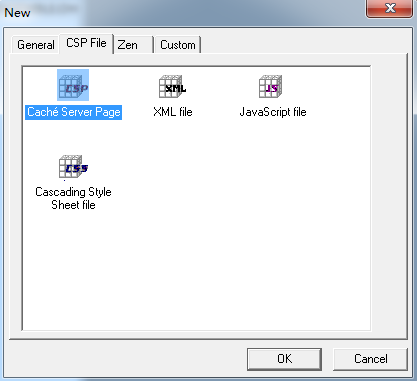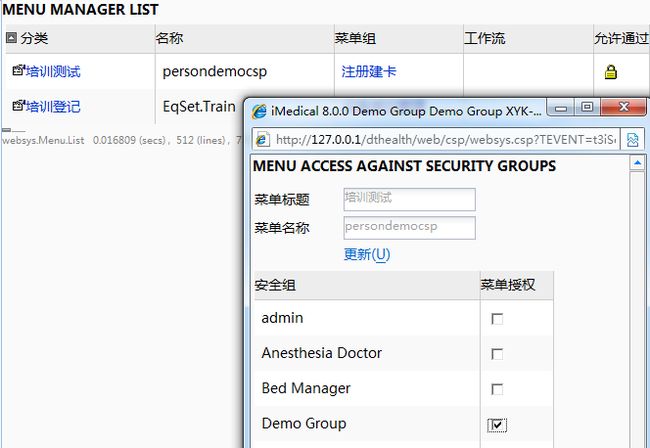cache数据库入门教程
2.保存到dthealth/web/csp下
3.进入demo 1 网页系统配置->菜单管理,将它放到注册建卡菜单下,菜单项名为培训测试 
1..MAC文件是m语言,下面是test111.MAC
test111
aa()
w "abc"
q 0- 最上面的名字和文件名一致
- 然后是方法名
- 文件名和方法名要顶头写,不能有空格
调用方式:DHC-APP>d aa^test111(),方法名有括号就带括号
2..cls是类文件,方法的写法与上面不一样
ClassMethod aa()
{
w "abc"
q 0
}- 调用方式:DHC-APP>d ##class(web.test111).aa()
3.建立临时Global
DHC-APP>set ^TEMP=3//Global物理存储到数据库,terminal关了的话还会有,其他变量会消失
DHC-APP>S ^TEMP("A")=1//设置节点
DHC-APP>s ^TEMP("B")=24.$h日期函数
$ZDate 把$Horolog 格式的日期值按照指定格式显示
+号表示第一个非数字符号前的数字
$ZDateH 是$ZDate 的反函数
$ZTime 把$Horolog 格式的时间值按照指定格式显示。
$ZTimeH $ZTime 的反函数。
DHC-APP>w $h
63802,58589
DHC-APP>w $zd(63802)
09/07/2015
DHC-APP>w $zd(63802,3)
2015-09-07
DHC-APP>w +$h
63802
DHC-APP>w $zd(+$h,3)
2015-09-07
DHC-APP>w $zdh("2015-9-7",3)
63802
DHC-APP>w $zdh("2024-9-7",3)-$zdh("2015-9-7",3)
3288
DHC-APP>w $zt(58543)
16:15:43
DHC-APP>w $zt(58543,2)
16:15
DHC-APP>w $zt(58543,3)
04:15:43PM
DHC-APP>w $zt($p($h,",",2))
17:07:505.$i 对每次运行的global产生唯一一个值
DHC-APP>w $i(^TEMP)
4
DHC-APP>w $i(^TEMP)
5
DHC-APP>w $i(^TEMP)
66.$e截取字符串
DHC-APP>s a="abcdef"
DHC-APP>w $e(a,2)
b
DHC-APP>w $e(a,2,4)
bcd7.for循环1加到100
ClassMethod testfor()
{
s m=0
f i=1:1:100 d
.s m=m+i
s sum=m
q sum
}
DHC-APP>w ##class(web.test111).testfor()
5050- 计算有多少个科室
ClassMethod testfor()
{
s m=0
s ctlocrowid=""
//q和d,f和s空两个空格
f s ctlocrowid=$o(^CTLOC(ctlocrowid)) q:ctlocrowid="" d
.s m=m+1
s sum=m
q sum
}- 8.Terminal查看Global
zw ^STUDENT
9.buildIndices()重建索引指定的类
上一篇 IIS配置问题1.建立Student表
表名:t_Student RowID:St_RowID
属性:StCode,StName,StSexDR,StDob
StSexDR为性别指向,指向一个CTSex性别表
Class User.Student Extends %Persistent [ SqlRowIdName = St_RowID, SqlTableName = t_Student, StorageStrategy = StudentStorage ]
{
Property StCode As %String [ Required, SqlColumnNumber = 2, SqlFieldName = st_code ];
Property StName As %String [ SqlColumnNumber = 3, SqlFieldName = st_name ];
Property StSexDR As CTSex [ SqlColumnNumber = 4, SqlFieldName = st_sex_dr ];
Property StDob As %Date [ SqlColumnNumber = 5, SqlFieldName = st_dob ];
Relationship ChildCourse As User.StuCourse [ Cardinality = children, Inverse = StudParRef ];
Index indexcode On StCode;
}
- 2.建立Course表
Class User.Course Extends %Persistent [ SqlRowIdName = C_RowID, SqlTableName = t_Course, StorageStrategy = CourseStorage ]
{
Property Code As %String [ SqlColumnNumber = 2, SqlFieldName = C_Code ];
/// 课程描述
Property Desc As %String [ SqlColumnNumber = 3, SqlFieldName = C_Desc ];
Property DateFrom As %Date [ SqlColumnNumber = 4, SqlFieldName = C_DateFrom ];
Property Active As %String(DISPLAYLIST = ",Yes,No", MAXLEN = 3, TRUNCATE = 1, VALUELIST = ",Y,N") [ SqlColumnNumber = 5, SqlFieldName = C_Active ];
Property UserDr As User.SSUser [ SqlColumnNumber = 6, SqlFieldName = C_User_Dr ];
}3.学生选课表
Class User.StuCourse Extends %Persistent [ SqlRowIdName = SC_RowID, SqlTableName = t_StuCourse, StorageStrategy = stucourse ]
{
Index RowIDBasedIDKeyIndex On SCChildSub [ IdKey, PrimaryKey, Unique ];
Relationship StudParRef As User.Student [ Cardinality = parent, Inverse = ChildCourse, Required, SqlFieldName = SC_S_ParRef ];
Property SCChildSub As %Library.Numeric(SCALE = 0) [ InitialExpression = {$i(^STUDENT($p($s($d(initvalue):initvalue,1:%d(0)),$c(1)),"C",0))}, Required, SqlColumnNumber = 2, SqlFieldName = SC_ChildSub ];
Property SCCourseDr As User.Course [ SqlColumnNumber = 3, SqlFieldName = SC_Course_Dr ];
Property SCScore As %Float [ SqlColumnNumber = 4, SqlFieldName = SC_Score ];
}
4.查询某个学生的选课情况
Class web.StuCourse Extends %Persistent
{
ClassMethod FindCourseByStud(stuno)
{
Quit:stuno="" ""
;第二个空是返回值
set stuId=$o(^STUDENTi(0,"No",stuno,""))
set sub=0
For set sub=$o(^STUDENT(stuId,"C",sub)) quit:sub="" d
.set g=^STUDENT(stuId,"C",sub)
.set CourseId=$p(g,"^",1)
.set CourseDesc=$p(^COURSE(CourseId),"^",2)
.set Score=$p(g,"^",2)
.Write CourseDesc_" "_Score
}
}1.我们已经建了一个person类,接下来就是表的存储结构
2.打开Inspector,先输入rowid名字为p_RowID,选class->Storage

3.新建一个Storage,选择CacheSQLStorage,在SqlIdExpression中输入$i(^mdata(“Person”))是\$不是S
意思是设置Rowid为自增,注意StremLocation的写法

4.Caché 以多维数组存储数据,所有数据都是保存Global中。Global以如下形式表示:^名称(下标1,下标2,下标3…)=值
SET ^Y(3,6,7)=”third”
SET ^Y(3,6,8)=”fourth”
SET ^Y(3,6,7,8,4)=”fifth”
SET ^Y(3,6,7,8,9)=”sixth”
Global的树状结构如下:
5.打开SQL storage map建立索引,点击add,选择map type为data,输入global名,一般为类名的大写

6.点击左侧data,选择add添加glabal的三条数据,用“^”隔开
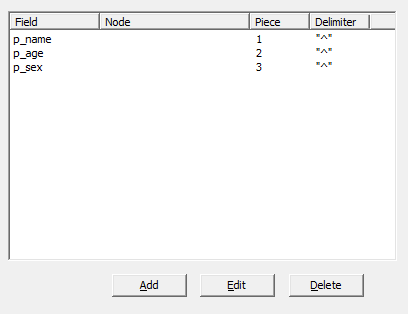
7.点击左侧Subscripts,输入{p_RowID}

8.点击左侧Rowid,输入如图所示
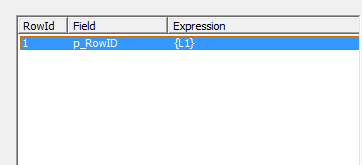
9.这时就建立了一个主索引,通过rowid可以查询表数据
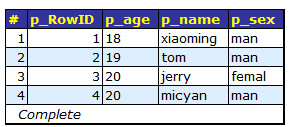
^PERSON(1)=xiaoming^18^man
^PERSON是global名,(1)表示rowid为1,后面的数据位置根据data里的位置排列
10.接下来,我们在建一个索引,在NewStorage1里add一个索引,map type选择index,输入global名

11.Subscripts建立如图所示,这里表示了global的四个层级,第一和第二层级是自己起的名字,方便理解global存储的信息,三四层是具体内容

12.rowid如图所示,是第四层

13.这个以名字建立的索引我们以global来理解
^PERSONi(0,”name”,”xiaoming”,1)=0
